CMMS Software for the Retail Industry
Streamline Work Order and Facility Management
No credit card required | Start your 30 day FREE trial
- CMMS
- Industry
- CMMS Software for the Retail Industry
Labor Efficiency Improvement
Estimated Downtime Reduction
Inventory Optimization
Trusted by thousands of maintenance & facilities professionals
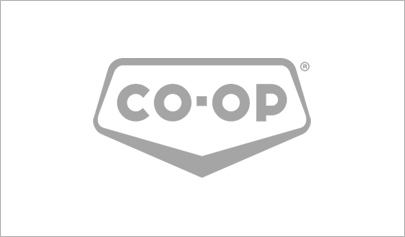




How much does a CMMS cost?
Try our Price Calculator to get an Instant Estimate for Your Use Case
PROFESSIONAL PLAN
$ 42 USD
PER USER PER MONTH
$ 35 USD
PER USER PER MONTH
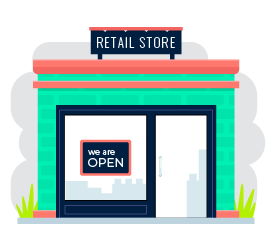
Retail Maintenance - Pain Points
Unexpected equipment failures
Energy Efficiency and Sustainability
High Customer Footfall Impact
Compliance and safety regulations
Diverse Assets and Locations
Unpredictable Maintenance Needs
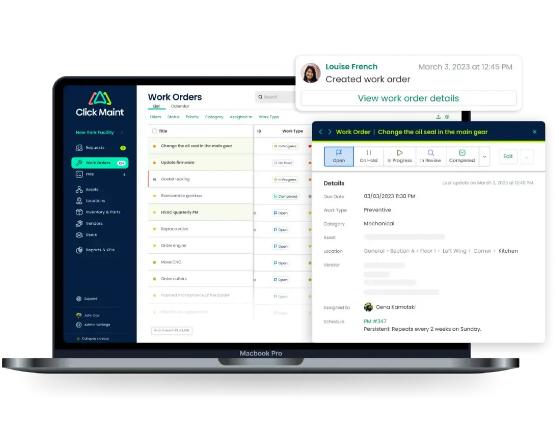
How CMMS Solves these Challenges
Automated work order management
Asset downtime tracking
Maintenance history reporting
Labor and cost tracking
Inventory management and optimization
Automated preventive maintenance scheduling
Key Features of Click Maint CMMS for Retail
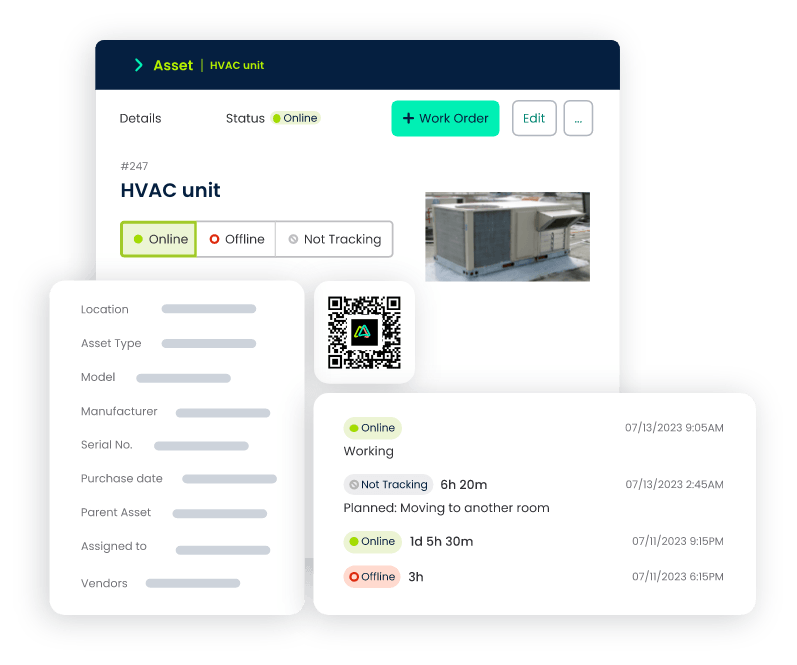
Asset Management
Tracking and Maintenance of Retail Assets
In the fast-paced and dynamic environment of the retail industry, the efficient tracking and maintenance of assets are critical for sustained operational success. CMMS for retail provides a centralized platform for tracking the entire lifecycle of retail assets. From point-of-sale systems to refrigeration units, CMMS ensures real-time visibility into the condition, location, and maintenance history of each asset. This level of asset transparency not only facilitates timely interventions but also aids in optimizing asset performance, reducing downtime, and ultimately extending the lifespan of valuable equipment.
Importance of Asset Lifecycle Management for Retail Equipment
Asset Lifecycle Management emerges as a cornerstone feature within CMMS for the retail sector. By strategically managing the lifecycle of retail equipment, from procurement to decommissioning, retailers can make informed decisions about repairs, upgrades, or replacements. CMMS facilitates comprehensive data analysis, allowing businesses to identify optimal asset replacement times, allocate resources efficiently, and ensure that each asset contributes maximally to the overall operational efficiency and customer experience.
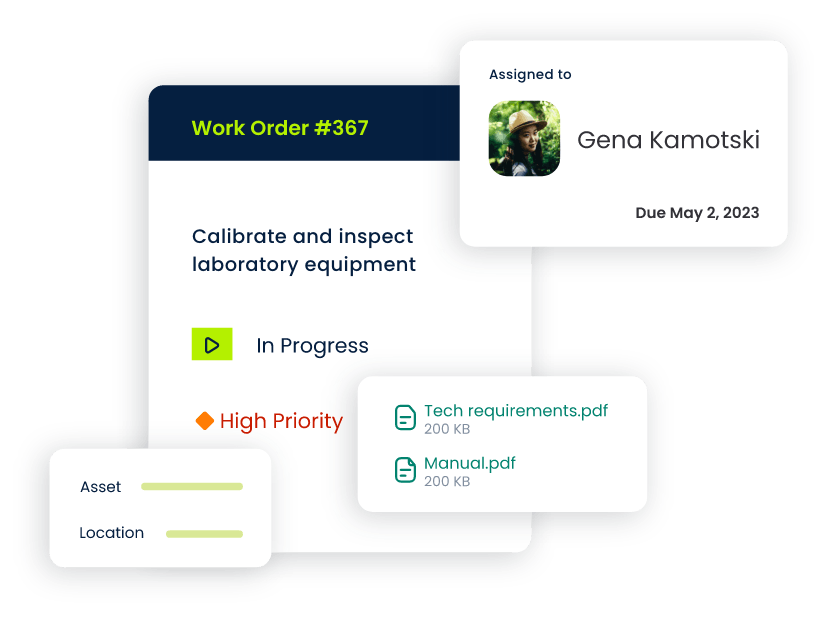
Work Order Management
Streamlining Maintenance Requests
CMMS revolutionizes the process of handling maintenance requests within the retail environment. The traditional methods of manual request submission and communication are replaced by an automated system where maintenance requests can be easily submitted, tracked, and managed. This streamlining of the request process not only reduces response times but also ensures that all stakeholders, from store managers to maintenance personnel, have real-time visibility into the status and progress of each request.
Improving Work Order Prioritization
Prioritizing maintenance tasks is a delicate balance in the retail industry, where downtime can directly impact sales and customer satisfaction. CMMS introduces intelligent work order prioritization features, leveraging historical data and asset criticality assessments to ensure that urgent issues are addressed promptly. This enhancement in prioritization results in optimized resource allocation, minimized disruptions, and a more efficient response to the diverse maintenance needs of a retail environment.
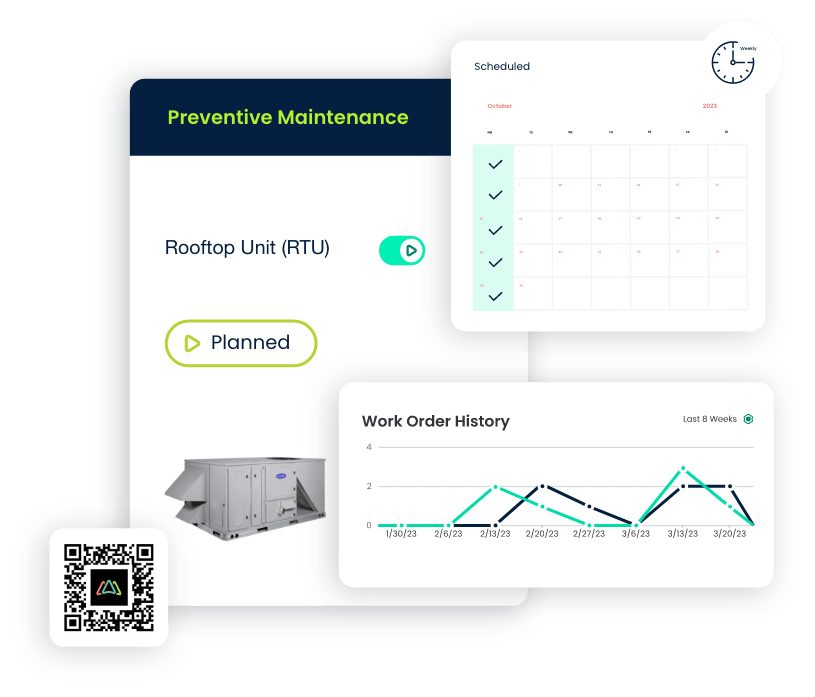
Preventive Maintenance
Significance of Preventive Maintenance in Retail
Preventive Maintenance stands as a linchpin in the operational strategy of successful retail businesses. CMMS emphasizes the significance of preventive maintenance by shifting the focus from reactive firefighting to proactive care for retail assets. Through continuous monitoring and analysis, CMMS identifies potential issues before they escalate into costly problems, reducing the frequency of unexpected breakdowns and enhancing the overall reliability of retail operations.
Creating Effective Preventive Maintenance Schedules
CMMS empowers facility managers of retailers to create tailored preventive maintenance schedules that align with the unique needs of the retail industry. By considering factors such as foot traffic, seasonal variations, and equipment usage patterns, CMMS assists in developing schedules that minimize disruptions and maximize the efficiency of maintenance efforts. The result is a proactive approach that not only preserves the health of retail assets but also contributes to a positive and uninterrupted customer experience.
TABLE OF CONTENTS
Evolution of CMMS in the Retail Industry
As the landscape of the retail industry evolved, with the advent of sprawling retail chains and diverse service offerings, the principles of CMMS found a new application. The transition of CMMS into retail operations marked a strategic response to the growing complexity of modern retail establishments. Retailers grappling with an increasing array of assets and facilities recognize the importance of adopting a systematic maintenance approach. This shift was driven by a desire to not only uphold equipment reliability but also to ensure a seamless and uninterrupted experience for customers.
Experience Click Maint CMMS now
30-Day Free Trial
No Credit Card needed.
Instant access to all features & modules with an optional live walk-through with a Click Maint expert
Book a live Demo
In this 30-minute demo, see firsthand how our easy CMMS can streamline your operations, enhance productivity, and reduce downtime.
Complexities of Retail Operations

Proliferation of Assets
The proliferation of assets within retail stores has been exponential. From traditional point-of-sale systems to cutting-edge digital displays and refrigeration units, the diversity and number of assets have increased significantly. This surge in asset complexity necessitates meticulous maintenance efforts. CMMS, originating from the manufacturing sector, found a natural application in the retail context, offering a centralized system to manage and optimize the maintenance of this diverse asset portfolio.
Diverse Facility Types
Retail environments are not homogenous; they encompass a wide range of facility types, each with its unique set of maintenance challenges. Flagship stores, warehouses, and distribution centers operate under distinct conditions, housing different types of assets and equipment. CMMS, with its flexibility and adaptability, became instrumental in addressing the specific maintenance needs of each facility type. This adaptability ensured that maintenance efforts were tailored to the requirements of the environment, enhancing overall operational efficiency.
Customer Experience Imperative
The impact of maintenance on customer satisfaction cannot be overstated. Any downtime or malfunctioning equipment directly translates into disruptions that can erode customer loyalty. The historical shift to CMMS in retail operations was, in part, fueled by a recognition that the seamless functioning of equipment and facilities is integral to providing customers with a positive and uninterrupted shopping experience. CMMS emerged as a strategic tool to safeguard and enhance customer satisfaction by proactively managing maintenance challenges.
See how affordable Click Maint CMMS is
Challenges Prior to CMMS Integration
Reactive Maintenance Paradigm
In the pre-CMMS era, many retail operations were mired in a reactive maintenance paradigm. Reactive maintenance, characterized by addressing issues as they arise rather than proactively preventing them, was the norm. Retailers would often wait until equipment malfunctioned or systems broke down before taking corrective action. This approach, though seemingly cost-effective in the short term, had a detrimental impact on overall retail operations. Unplanned downtime, unexpected breakdowns, and reactive responses led to increased operational costs, hindered productivity, and compromised the quality of customer service.
Lack of Centralized Maintenance Oversight
Managing maintenance activities across multiple retail locations posed a significant challenge prior to the integration of Computerized Maintenance Management Systems (CMMS). The absence of a centralized system meant that each location operated independently, making it difficult to coordinate maintenance efforts. This lack of centralized oversight resulted in inefficiencies as maintenance teams struggled to communicate, share information, and implement standardized procedures. The decentralized nature of maintenance operations often led to redundant efforts, miscommunication, and an overall lack of cohesion in addressing common issues.
Compliance and Reporting Issues
Meeting regulatory maintenance standards was a cumbersome task before the adoption of CMMS in the retail sector. Without a streamlined system in place, retailers faced difficulties in consistently adhering to industry regulations and standards. Compliance issues not only exposed businesses to legal risks but also jeopardized the safety and reliability of retail operations. Generating accurate and timely maintenance reports for auditing purposes was a manual and error-prone process. This lack of robust reporting capabilities hindered the ability of retailers to demonstrate adherence to maintenance protocols and regulatory requirements, potentially affecting their reputation and legal standing.
The Need for a CMMS in Retail
Proactive Maintenance Strategies
Proactive maintenance is the cornerstone of efficient and cost-effective operations, as it involves identifying and addressing potential issues before they escalate into critical problems. With CMMS, retailers can transition from a firefighting approach to a predictive and preventative maintenance mindset. By leveraging historical data and predictive analytics, CMMS empowers maintenance teams to anticipate issues, schedule maintenance activities strategically, and ultimately minimize downtime. This proactive approach not only enhances the reliability of assets but also optimizes operational efficiency, leading to a more seamless and customer-centric retail experience.
Centralized Maintenance Management
The diverse and expansive nature of retail operations demands a holistic and centralized approach to maintenance management. Before the advent of CMMS in the retail industry, managing maintenance activities across multiple locations posed significant challenges. The lack of a centralized system led to disparate and siloed maintenance efforts, hindering communication and collaboration between different retail sites. CMMS addresses this issue by providing a centralized platform where all maintenance activities can be consolidated and managed efficiently. This centralized maintenance management ensures that maintenance teams have enhanced visibility and control over operations across diverse retail locations. Standardized procedures, real-time communication, and a unified approach to asset management contribute to improved operational efficiency and a consistent customer experience.
Regulatory Compliance and Reporting
In an era of stringent regulatory standards, compliance is non-negotiable for retail businesses. The integration of CMMS in the retail sector addresses the challenges associated with adhering to regulatory standards. CMMS solutions are equipped with features designed to ensure compliance with industry regulations, safety standards, and maintenance protocols. By incorporating regulatory requirements into the system, CMMS facilitates the seamless execution of compliant maintenance practices. Furthermore, CMMS streamlines the often complex and time-consuming process of generating accurate and timely maintenance reports for audits and compliance verification. This not only reduces the risk of regulatory penalties but also enhances the credibility of retail operations, fostering trust among customers, stakeholders, and regulatory bodies.
Implementation of CMMS in Retail

Assessing the Retail Environment
Identifying Maintenance Needs
Before the successful implementation of a Computerized Maintenance Management System (CMMS) in the retail sector, a thorough assessment of the current maintenance landscape is important. This involves identifying and cataloging the maintenance needs of various assets within retail establishments. CMMS enables a systematic approach to this assessment by providing tools for data collection, analysis, and the creation of a comprehensive inventory of assets. Identifying maintenance needs allows retailers to prioritize areas requiring immediate attention, ensuring a targeted and effective implementation process.
Understanding Workflow Dynamics
Understanding the intricate workflow dynamics of retail operations is essential for a seamless CMMS implementation. Retail environments involve a myriad of interconnected processes, from inventory management to customer service. CMMS integration necessitates a detailed understanding of these workflows to ensure that maintenance activities align with broader business objectives. By mapping out the workflow dynamics, retailers can optimize CMMS functionalities to enhance efficiency, reduce disruptions, and integrate maintenance seamlessly into existing operational processes.

Selecting the Right CMMS Solution
Criteria for Vendor Evaluation
Choosing the right CMMS solution is a critical decision that requires a comprehensive evaluation of potential vendors. Retailers should establish clear criteria for vendor selection to ensure that the chosen CMMS aligns with the unique needs of their business. Factors to consider include the vendor's track record, scalability of the system, user-friendliness, technical support, and the ability to adapt to evolving industry standards. A well-informed vendor evaluation process lays the foundation for a successful CMMS implementation and long-term operational efficiency.
Customization for Retail-Specific Requirements
Retail environments often come with specific requirements that necessitate a tailored CMMS solution. The selected CMMS should offer customization options that allow retailers to adapt the system to their unique operational demands. Whether it's configuring asset categories specific to retail or integrating with point-of-sale systems, the ability to customize ensures that the CMMS aligns seamlessly with the intricacies of retail operations. A customizable CMMS is not a one-size-fits-all solution but rather a strategic tool that can evolve with the changing needs of the retail landscape.

Training and Change Management
Employee Training on CMMS Usage
The successful implementation of CMMS in the retail sector hinges on effective training programs for employees. Retail staff at all levels, from maintenance teams to managerial staff, need to be proficient in utilizing the features and functionalities of the CMMS. Training programs should cover aspects such as work order submission, asset tracking, and preventive maintenance scheduling. An adequately trained workforce ensures that the full potential of the CMMS is realized, leading to enhanced productivity and streamlined maintenance processes.
Overcoming Resistance to Change
Resistance to change is a common challenge during CMMS implementation. Retailers must proactively address this by fostering a culture that embraces innovation. Communication, transparency, and involving employees in the transition process are key strategies. Demonstrating the tangible benefits of CMMS, such as time savings, reduced downtime, and improved operational efficiency, helps in overcoming resistance and building a positive attitude toward the new system.
Checklist for CMMS Implementation in Retail
A Step-by-Step Guide for Retailers
Implementing a Computerized Maintenance Management System (CMMS) in the retail sector requires a meticulous and strategic approach. The following step-by-step guide serves as a comprehensive checklist to aid retailers in ensuring a successful CMMS implementation tailored to their specific needs.
Needs Assessment:
- Conduct a thorough assessment of maintenance needs across all retail locations.
- Identify critical assets, potential bottlenecks, and areas requiring immediate attention.
Workflow Analysis:
- Understand the intricacies of retail workflows and operational processes.
- Map out how maintenance activities integrate with broader business functions.
- Document the work order management process taking into account the process for submitting and approving maintenance requests, dispatching work orders to internal maintenance teams and 3rd party vendors, escalation protocols, and review process.
Vendor Selection:
- Establish criteria for evaluating CMMS vendors.
- Research and shortlist vendors based on their track record, scalability, and industry expertise.
Customization Requirements:
- Identify specific customization needs for retail operations.
- Ensure the selected CMMS solution offers flexibility and adaptability to meet these requirements.
Integration Planning:
- Conduct compatibility checks with existing systems.
- Collaborate with IT experts to address requirements and potential integration challenges (SSO, Active Directory, ERP integrations).
Employee Training Programs:
- Develop comprehensive training programs for all staff levels.
- Include hands-on sessions, user guides, and workshops to ensure proficiency in CMMS usage.
Change Management Strategies:
- Address resistance to change through effective communication.
- Involve employees in the decision-making process and highlight the benefits of CMMS.
Pilot Implementation:
- For large implementations involving multiple locations, consider a pilot implementation in one or a few retail locations.
- Gather feedback from users to identify and address any initial challenges.
Full-Scale Rollout:
- Roll out CMMS across all retail locations.
- Monitor and address any issues that may arise during the full-scale implementation.
Preventive Maintenance Scheduling:
- Develop effective preventive maintenance schedules.
- Align schedules with retail-specific factors such as foot traffic and seasonal variations.
Regulatory Compliance Integration:
- Ensure the CMMS is equipped with features to support regulatory compliance.
- Streamline reporting capabilities for audits and compliance verification.
Continuous Improvement Strategies:
- Establish a system for continuous improvement and feedback.
- Regularly review CMMS performance and adapt processes based on evolving needs.
Performance Metrics and KPIs:
- Define key performance indicators (KPIs) to measure CMMS effectiveness.
- Implement a system for ongoing performance evaluation and optimization.
User Support and Documentation:
- Work with the CMMS provider to document ongoing user support for any technical issues.
- Maintain comprehensive documentation for reference and troubleshooting.
Feedback Mechanisms:
- Establish mechanisms for collecting feedback from maintenance teams and end-users.
- Use feedback to refine and optimize CMMS processes over time.
Best Practices for CMMS in Retail
Efficient utilization of CMMS in the retail sector goes beyond mere implementation - it involves the adoption of best practices that enhance the system's effectiveness and contribute to long-term operational success.
Regular System Audits and Updates
Scheduled Audits:
- Establish a routine schedule for comprehensive CMMS audits.
- Review system configurations, data accuracy, and user access permissions.
Update Management:
- Stay abreast of CMMS software updates and patches.
- Plan regular system updates to ensure the integration of new features and enhancements.
Data Integrity Checks:
- Conduct periodic data integrity checks to identify and rectify discrepancies.
- Ensure that all historical and real-time data aligns with actual maintenance activities.
User Training Updates:
- Keep employee training programs up-to-date with system changes.
- Provide refresher courses to ensure that users are proficient in the latest CMMS functionalities.
Security Audits:
- Perform regular security audits to identify and address potential vulnerabilities.
- Ensure that data privacy and system security protocols are consistently upheld.
Assign CMMS Owners or Champions
Subject Matter Experts:
- Designate 1 or 2 CMMS owners or champions within your organization.
- Ensure they are subject matter experts with in-depth knowledge of both your maintenance processes and the intricacies of the CMMS.
Responsibility for Success:
- Entrust CMMS owners or champions with the responsibility for the overall success of the CMMS implementation.
- Make them accountable for fostering a positive relationship with the CMMS provider.
Backup Plans:
- Always have a contingency plan in place in case the assigned owner or champion leaves the company. Document and save training sessions and learnings.
- Prepare for seamless transitions by identifying and training potential successors to maintain CMMS continuity.
Collaboration Between Maintenance and Operations Teams
Cross-Functional Communication:
- Foster open communication channels between maintenance and operations teams.
- Encourage regular meetings to discuss ongoing maintenance needs and operational priorities.
Shared Goals and KPIs:
- Establish shared goals and key performance indicators (KPIs) for both teams.
- Align KPIs to ensure that maintenance activities contribute to broader operational objectives.
Integrated Workflows:
- Implement integrated workflows that facilitate seamless communication.
- Use the CMMS to bridge the gap between maintenance and operations processes.
Collaborative Planning:
- Involve both teams in the planning and scheduling of maintenance activities.
- Leverage input from operations teams to optimize maintenance schedules for minimal disruption.
Feedback Mechanisms:
- Establish mechanisms for feedback between maintenance and operations.
- Regularly assess and incorporate feedback to enhance collaboration and efficiency.
Data-Driven Decision-Making
Real-Time Analytics:
- Utilize real-time analytics provided by the CMMS for informed decision-making.
- Leverage data on asset performance, work order completion times, and maintenance costs.
Performance Metrics:
- Define and track performance metrics related to maintenance efficiency.
- Regularly analyze these metrics to identify areas for improvement and optimization.
Continuous Improvement Culture:
- Foster a culture of continuous improvement based on data-driven insights.
- Encourage teams to use data for problem-solving and optimization.
Training on Data Utilization:
- Provide training to staff on interpreting and utilizing CMMS-generated data.
- Ensure that decision-makers are equipped with the skills to extract meaningful insights.


